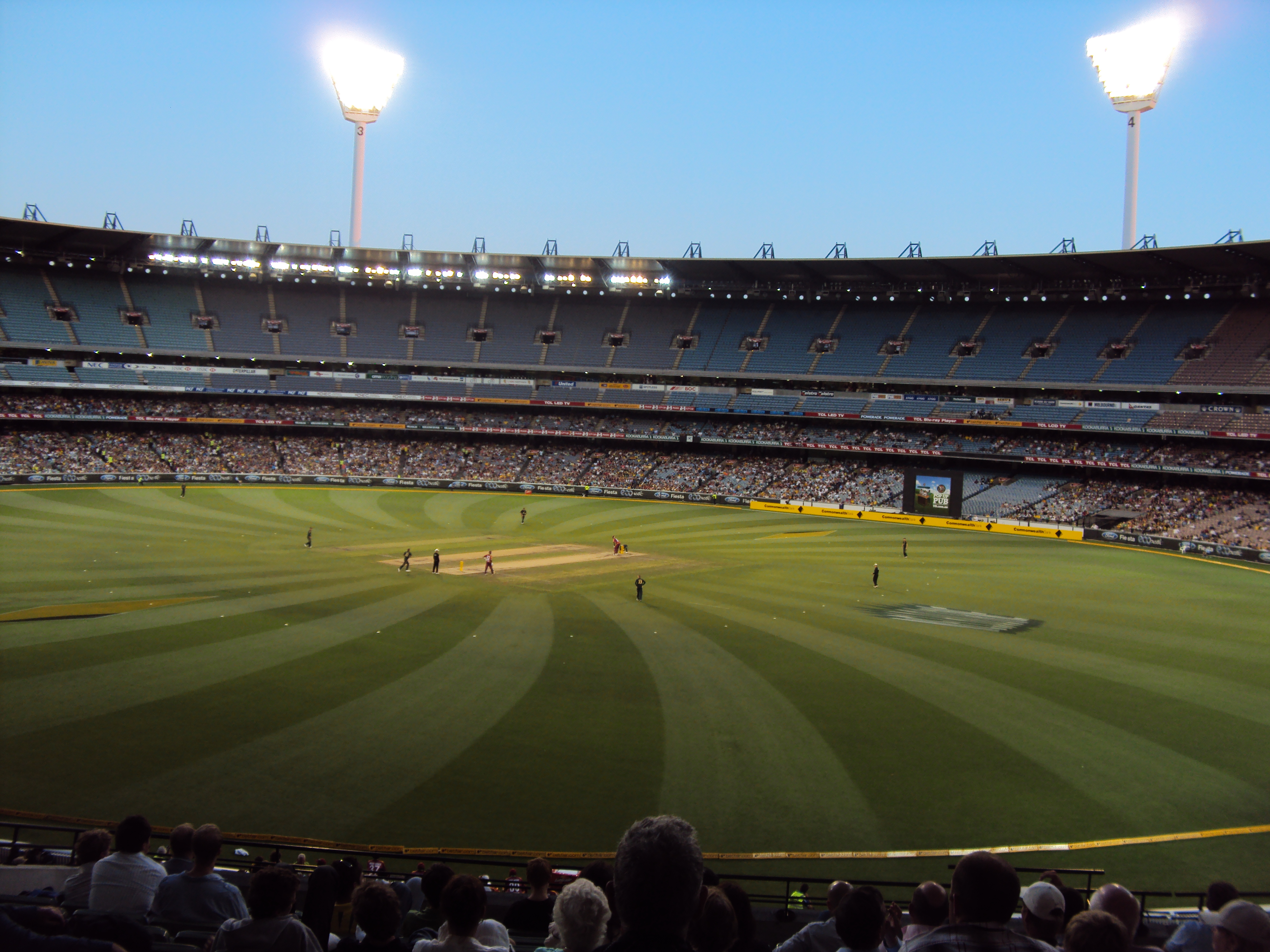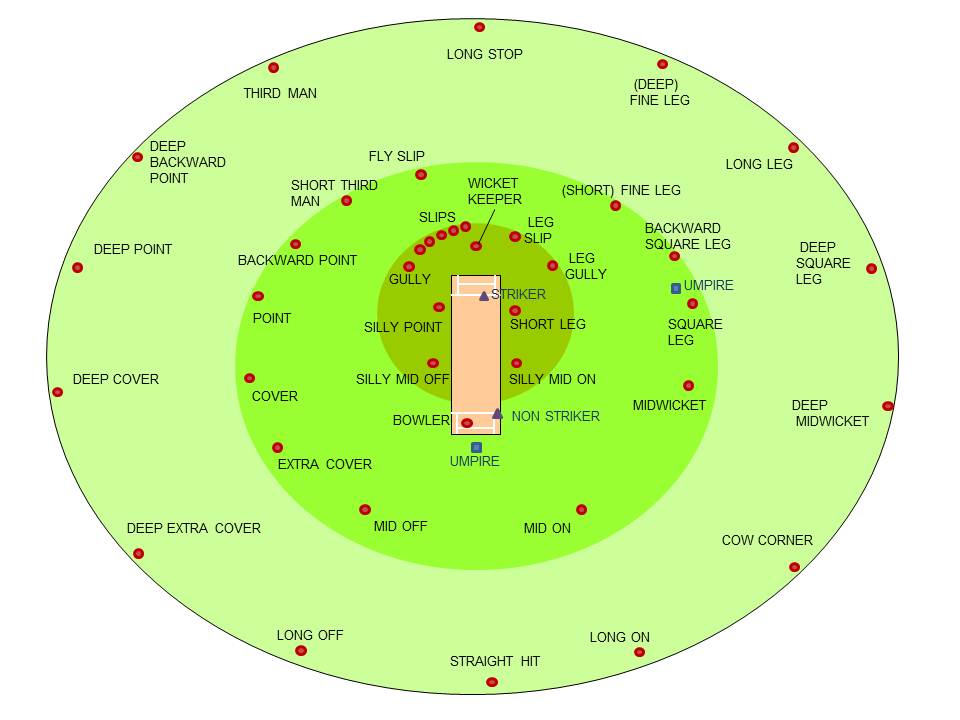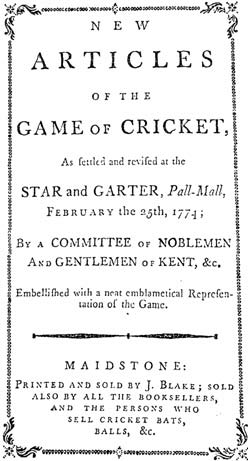|
Match Referee
A match referee is an official appointed to oversee professional cricket matches. Match referees for Test matches and One Day Internationals are appointed by the International Cricket Council (ICC). Most matches below international level do not have a referee. A match referee remains off the field of play at all times during the actual play of the game, observing events from a spectator area. The referee makes no decisions of any relevance to the play or result of the game; such decisions are the sole responsibility of the appointed umpires. The match referee's responsibility is to ensure that the ICC Cricket Code of Conduct The ICC Cricket Code of Conduct is a regulation regarding the conduct of professional players in the sport of cricket. Traditionally, cricket requires "gentlemanly" conduct from all players. The Code of Conduct is written and enforced by the Intern ... is upheld during the game, to assess any breaches of the Code, and to hand out penalties for any breaches ... [...More Info...] [...Related Items...] OR: [Wikipedia] [Google] [Baidu] |
Cricket
Cricket is a bat-and-ball game played between two teams of eleven players on a field at the centre of which is a pitch with a wicket at each end, each comprising two bails balanced on three stumps. The batting side scores runs by striking the ball bowled at one of the wickets with the bat and then running between the wickets, while the bowling and fielding side tries to prevent this (by preventing the ball from leaving the field, and getting the ball to either wicket) and dismiss each batter (so they are "out"). Means of dismissal include being bowled, when the ball hits the stumps and dislodges the bails, and by the fielding side either catching the ball after it is hit by the bat, but before it hits the ground, or hitting a wicket with the ball before a batter can cross the crease in front of the wicket. When ten batters have been dismissed, the innings ends and the teams swap roles. The game is adjudicated by two umpires, aided by a third umpire and match r ... [...More Info...] [...Related Items...] OR: [Wikipedia] [Google] [Baidu] |
Test Cricket
Test cricket is a form of first-class cricket played at international level between teams representing full member countries of the International Cricket Council (ICC). A match consists of four innings (two per team) and is scheduled to last for up to five days. In the past, some Test matches had no time limit and were called Timeless Tests. The term "test match" was originally coined in 1861–62 but in a different context. Test cricket did not become an officially recognised format until the 1890s, but many international matches since 1877 have been retrospectively awarded Test status. The first such match took place at the Melbourne Cricket Ground (MCG) in March 1877 between teams which were then known as a Combined Australian XI and James Lillywhite's XI, the latter a team of visiting English professionals. Matches between Australia and England were first called "test matches" in 1892. The first definitive list of retrospective Tests was written by South Australian journ ... [...More Info...] [...Related Items...] OR: [Wikipedia] [Google] [Baidu] |
One Day International
A One Day International (ODI) is a form of limited overs cricket, played between two teams with international status, in which each team faces a fixed number of overs, currently 50, with the game lasting up to 9 hours. The Cricket World Cup, generally held every four years, is played in this format. One Day International matches are also called Limited Overs Internationals (LOI), although this generic term may also refer to Twenty20 International matches. They are major matches and considered the highest standard of List A, limited-overs competition. The international one day game is a late-twentieth-century development. The first ODI was played on 5 January 1971 between Australia and England at the Melbourne Cricket Ground. When the first three days of the third Test were washed out officials decided to abandon the match and, instead, play a one-off one day game consisting of 40 eight-ball overs per side. Australia won the game by 5 wickets. ODIs were played in white-colo ... [...More Info...] [...Related Items...] OR: [Wikipedia] [Google] [Baidu] |
International Cricket Council
The International Cricket Council (ICC) is the world governing body of cricket. Headquartered in Dubai, United Arab Emirates, its members are List of International Cricket Council members, 108 national associations, with 12 List of International Cricket Council members#Full Members, Full Members and 96 List of International Cricket Council members#Associate Members, Associate Members. Founded in 1909 as the ''Imperial Cricket Conference'', it was renamed the ''International Cricket Conference'' in 1965, and took up its current name in 1987. The ICC has 108 member nations currently: 12 List of International Cricket Council members#Full Members, Full Members that play Test cricket, Test matches, and 96 List of International Cricket Council members#Associate Members, Associate Members. The ICC is responsible for the organisation and governance of cricket's major international tournaments, most notably the Cricket World Cup and the T20 World Cup. It also appoints the umpire (cricke ... [...More Info...] [...Related Items...] OR: [Wikipedia] [Google] [Baidu] |
Umpire (cricket)
In cricket, an umpire (from the Old French ''nompere'' meaning not a peer, i.e. not a member of one of the teams, impartial) is a person who has the authority to make decisions about events on the cricket field according to the '' Laws of Cricket''. Besides making decisions about legality of delivery, appeals for wickets and general conduct of the Game in a legal manner, the umpire also keeps a record of the deliveries and announces the completion of an over. A cricket umpire is not to be confused with the referee who usually presides only over international matches and makes no decisions affecting the outcome of the game. Overview Traditionally, cricket matches have two umpires on the field, one standing at the end where the bowler delivers the ball (bowler's end), and one directly opposite the facing batsman (usually, but not always, at square leg). However, in the modern game, there may be more than two umpires; for example Test Matches have four: two on-field umpires, a ... [...More Info...] [...Related Items...] OR: [Wikipedia] [Google] [Baidu] |
ICC Cricket Code Of Conduct
The ICC Cricket Code of Conduct is a regulation regarding the conduct of professional players in the sport of cricket. Traditionally, cricket requires "gentlemanly" conduct from all players. The Code of Conduct is written and enforced by the International Cricket Council. Under the ICC regulations, players may be fined a percentage of the salary, banned for number of matches, or even banned for a number of years or life. The ICC appoints a match referee for each Test match, One Day International and Twenty20; the Referee has the power to set penalties for most offences, the exceptions being the more serious ones. The following are the general categories of serious offences, carrying the highest penalties: * Gambling on matches (betting). * Failing to perform in a match in return for a benefit, such as money or goods (match fixing). * Inducing a player to perform one of the above two actions. * Failure to report certain incidents relating to match-fixing or gambling. * Other relate ... [...More Info...] [...Related Items...] OR: [Wikipedia] [Google] [Baidu] |
Laws Of Cricket
The ''Laws of Cricket'' is a code which specifies the rules of the game of cricket worldwide. The earliest known code was drafted in 1744 and, since 1788, it has been owned and maintained by its custodian, the Marylebone Cricket Club (MCC) in London. There are currently 42 Laws (always written with a capital "L") which outline all aspects of how the game is to be played. MCC has re-coded the Laws six times, the seventh and latest code being released in October 2017. The 2nd edition of the 2017 Code came into force on 1 April 2019. The first six codes prior to 2017 were all subject to interim revisions and so exist in more than one version. MCC is a private club which was formerly cricket's official governing body, a role now fulfilled by the International Cricket Council (ICC). MCC retains copyright in the Laws and only the MCC may change the Laws, although usually this is only done after close consultation with the ICC and other interested parties such as the Association of Cricke ... [...More Info...] [...Related Items...] OR: [Wikipedia] [Google] [Baidu] |
Throwing (cricket)
Throwing, commonly referred to as chucking, is an illegal bowling action in the sport of cricket. This occurs when a bowler straightens the bowling arm when delivering the ball. Throws are not allowed. If the umpire deems that the ball has been thrown, they will call a no-ball, which means the batsman cannot be given out from that delivery. After biomechanical testing showed that all bowlers flex their extended arms to some degree, rules were changed. Current regulations of the International Cricket Council (ICC) set a limit of 15 degrees of permissible straightening of the elbow joint for all bowlers in international cricket. This law applies between the point at which the bowling arm passes above shoulder height and the point at which the ball is released. The limit is to allow only the natural flexing of the elbow joint which happens during the course of legal delivery. The charge of 'throwing' against a bowler is one of the most serious and controversial that can be made in ... [...More Info...] [...Related Items...] OR: [Wikipedia] [Google] [Baidu] |
Cricket Ball
A cricket ball is a hard, solid ball used to play cricket. A cricket ball consists of a cork core wound with string then a leather cover stitched on, and manufacture is regulated by cricket law at first-class level. The trajectory of a cricket ball when bowled, through movement in the air, and off the ground, is influenced by the action of the bowler and the condition of the ball and the pitch, while working on the cricket ball to obtain optimal condition is a key role of the fielding side. The principal method through which the batsman scores runs is by hitting the ball, with the bat, into a position where it would be safe to take a run, or by directing the ball through or over the boundary. Cricket balls are harder and heavier than baseballs. In Test cricket, professional domestic games that spread over a multitude of days, and almost the entirety of amateur cricket, the traditional red cricket ball is normally used. In many one day cricket matches, a white ball is use ... [...More Info...] [...Related Items...] OR: [Wikipedia] [Google] [Baidu] |
Bowler (cricket)
Bowling, in cricket, is the action of propelling the ball toward the wicket defended by a batter. A player skilled at bowling is called a ''bowler''; a bowler who is also a competent batter is known as an all-rounder. Bowling the ball is distinguished from ''throwing'' the ball by a strictly specified biomechanical definition, which restricts the angle of extension of the elbow. A single act of bowling the ball towards the batsman is called a ''ball'' or a '' delivery''. Bowlers bowl deliveries in sets of six, called an ''over''. Once a bowler has bowled an over, a teammate will bowl an over from the other end of the pitch. The Laws of Cricket govern how a ball must be bowled. If a ball is bowled illegally, an umpire will rule it a '' no-ball''. If a ball is bowled too wide of the striker for the batsman to be able to play at it with a proper cricket shot, the bowler's end umpire will rule it a '' wide''. There are different types of bowlers, from fast bowlers, whose prim ... [...More Info...] [...Related Items...] OR: [Wikipedia] [Google] [Baidu] |
No-ball
In cricket, a no-ball is a type of illegal delivery to a batter (the other type being a wide). It is also a type of extra, being the run awarded to the batting team as a consequence of the illegal delivery. For most cricket games, especially amateur, the definition of all forms of no-ball is from the MCC '' Laws of Cricket.'' The delivery of a no-ball results in one run – two under some regulations – to be added to the batting team's overall score, and an additional ball must be bowled. In addition, the number of ways in which the batter can be given out is reduced to three. In shorter competition cricket, a batter receives a free hit on the ball after any kind of no-ball (see below); this means the batter can freely hit that one ball with no danger of being out in most ways. No-balls due to overstepping the crease are common, especially in short form cricket, and fast bowlers tend to bowl them more often than spin bowlers. It is also a no-ball when the bowler's ba ... [...More Info...] [...Related Items...] OR: [Wikipedia] [Google] [Baidu] |
David Boon
David Clarence Boon (born 29 December 1960) is an Australian cricket match referee, former cricket commentator and international cricketer whose international playing career spanned the years 1984–1996. A right-handed batsman and a very occasional off-spin bowler, he played first-class cricket for both his home state Tasmania and English county side Durham. Known for his portly figure and distinctive moustache, Boon scored more than 7,000 runs at Test level, and made more than 100 appearances for both the Test and One Day International Australian side. After leaving the international game he went to England to captain Durham before retiring to become a national selector. Early life The son of Clarrie and Lesley, Boon was born in the Northern Tasmanian city of Launceston on 29 December 1960. His younger sister Vanessa was born in 1964. His father Clarrie worked in a newsagency in Launceston, while his mother Lesley represented Australia at hockey before working with Clar ... [...More Info...] [...Related Items...] OR: [Wikipedia] [Google] [Baidu] |







